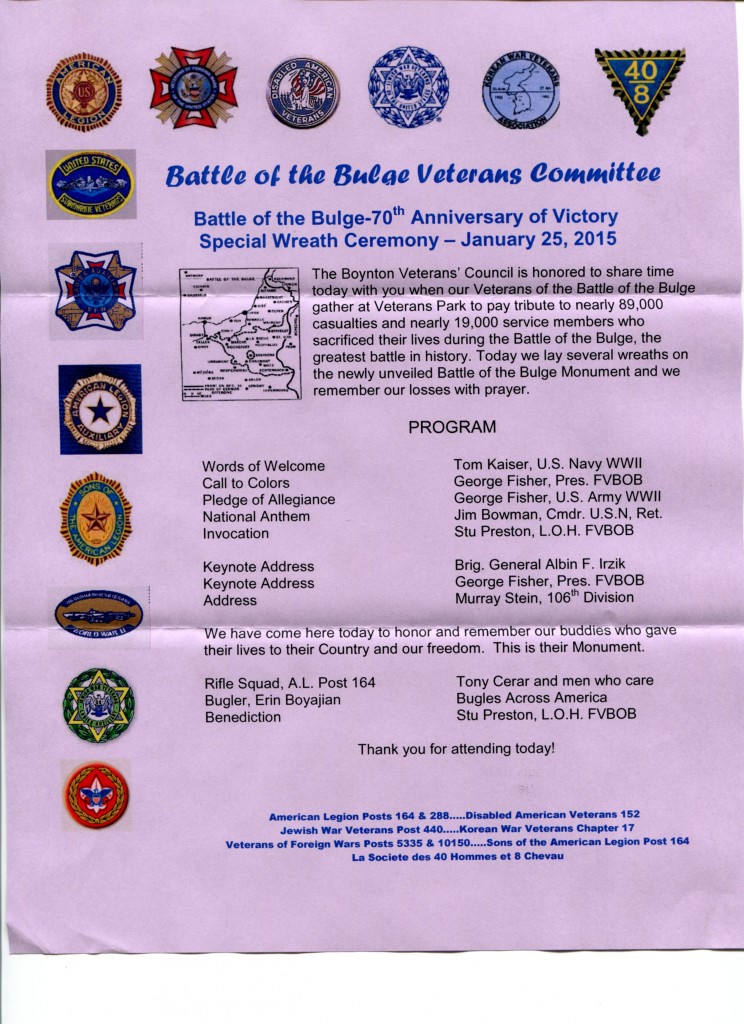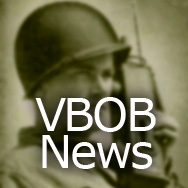
Tribute to Former Indian River Chapter President, Al Babecki

Fifty years after the Battle of the Bulge, AI Babecki spearheaded the Indian River Chapter for Veterans of the Battle of the Bulge and served as Chapter President for many years. During World War II, AI served in the 1255th Engineer Combat Battalion. In 1989 he became the original editor of the newsletter for that group and continued writing, typing and even mailing the Bulletin to members across the country.
AI and his wife Dory had moved to Barefoot Bay, Florida in 1986 after he retired from NASA – Goddard Space Flight Center, in Greenbelt, MD.
After a life of service, both military and community, AI Babecki passed away on January 17, 2015, at the age of 89. After cremation, AI was put to rest in Arlington National Cemetery with a military service.
Here is a poem Al Babecki wrote about the war in 1994:
IN MEMORIAM
This memorial service is a rightful obligation
For a group like ours to perform with concentration,
To honor those persons who meant a great deal
In our young lives when war was unreal.
These were our Friends, our Comrades in arms.
They came from cities, villages, and farms;
And, with us, they trained to build and to kill,
To help our country in its hours of peril
Brought on by despots in the East and the West
Who threatened our Freedom, and that of the rest.
These were our Buddies with whom we spent time
In huts and in tents, on ship and Europe’s grime.
On them we learned to depend for our future.
And they on us: the Buddy System was super,
Except for those few who paid with their lives
So the Battalion, the U.S., and democracy survives.
These were our Pals; they showed us much fun,
Along with the engineer missions we had run.
We’ll never forget them as long as we live,
For they had much to offer, and much to give.
And, whether they died in battle, or later,
To us their service couldn’t have been greater.
And, now as we honor these heroes of ours,
Let us pause to remember them as among God’s stars;
And, as we prepare for our next year’s reunion,
We should maintain with them a constant communion;
For what is a man, if he’s not remembered
By his family and friends for all that he’s rendered?
Our time, too, will come for certain
As Life lowers on us its final curtain.
We hone that those who remain behind
Will meet like this to keep us in mind.
submitted by his daughter, Barbara Jones

Withdrawing to Elsenborn Ridge-Billy H. Clampett, 99th ID
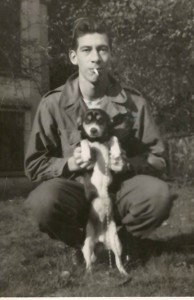
The first day, December 16th, of the German Ardennes offensive was a huge success. Up and down the First Army front the Germans advanced as planned. In the Ghost Front area, where the main thrust was made, the 395th and the 394th were hit hard; to their right the 106th was overrun; and, to the right of the l06th, the situation was just as bad. On the 17th the Siegfried Line attack was called off and the withdrawal of the 395th to Elsenborn Ridge began.
Generally speaking, that was the situation. Now, what did soldiers like me know? We knew, first of all, that we were no longer attacking. Secondly, we knew from rumors and bits and pieces of news, that the Germans had launched an offensive of their own and were punishing the 99th and the 106th. Some rumors even had the Germans breaking through and racing for Paris. Next, we knew that the 395th was in a precarious situation; common sense told us that we were beyond the present front line. We did not know, or at least I did not know, that the 395th was carrying out a planned withdrawal. My impression was that 395th was cut off, surrounded, and that we were moving here and there trying to find an escape route. For many years I thought that we had escaped being captured only because the Germans, in their haste to reach and cross the Meuse River, bypassed us.
The four of five days that the 395th struggled to reach Elsenborn Ridge were the worst days that I spent in the Ardennes. Never again was the cold so cold, the shelling so fierce, or the uncertainty so great such specific memories as I have will be shared under their own descriptive headings. At some point, during the withdrawal, the 395th was placed under the command of the Commanding General, 2nd Division.
I have read everything that I could get my hands on dealing with the Battle of the Bulge. So, when I say that in withdrawing to Elsenborn Ridge, the 395th Combat Team utilized the procedure known as leap-frogging, you will already have guessed what I am now going to tell you—that I did not know that leap-frogging was going on until I read about it much later. As I said, my low level sense of the situation was that we were cut off, maybe even surrounded, and were searching for an escape route. Simplified, when leap-frogging unit A withdraws through a defensive line formed by unit B and, having passed through unit B’s defensive line, unit A forms a defensive line through which unit B then withdraws-with this going on until the withdrawal is complete.
As I said, I had no idea that we were leap-froging. I only knew that, endlessly, we were marching, digging in, freezing, getting shelled, and moving out, and going through it all again. Ammunition bearers in a heavy weapons company do not access to the big picture-in the Ardennes in December 1944, this probably was a good thing.
The Long Night
There was a long night. I endured it. Books say that the long night was the night of December 18th. I do not recall the date, but I do recall the night. What happened can be told in one long sentence. On a bitterly cold night, during the withdrawal to Elsenborn Ridge, the weary soldiers of the 395th climbed out of their foxholes, trudged across the frozen ground of the Ardennes for what seemed like forever, then turned around and retraced their steps, climbing back into the same foxholes that they had climbed out of earlier.
How could such a fiasco happen? One answer, if you can picture those weary soldiers trudging across the frozen ground, will bring tears to your eyes. According to books that I have read, that answer is: The 395th was met with “What Order”? No one there knew anything about such an order. With the 395th out of the defensive line, a gaping hole existed. The 395th was instantly ordered to retrace its steps. The incredible part of the story is-the order to pull out had been received by the 395th over the radio and had been given, probably in jest, by an English speaking German officer. That the order had been blindly obeyed seems unreal.
One battalion commander, I have also read, was sacked because, his men being exhausted to the point of dropping, he refused to order them back to their empty foxholes. His conduct paints a better picture of the whole episode than lean paint in words. I knew nothing about the mix up, or joke, or whatever it was. As I said earlier, I thought we were surrounded and trying to escape—that this was just more evidence of our plight.
More than sixty years later, I still remember the long night.
The Tank Battle
One dark, dark night during the withdrawal to Elsenborn Ridge, as our column was stealthily making its way along the edge of a clearing, staying far enough inside the wooded area to be out of sight, the sounds of tanks grinding away on the frozen ground broke the silence. The column halted, for the chilling sounds did not tell how many tanks there were or in which direction they were moving. At that time, remember, Germans were thought to be everywhere.
Just then, from the flashes of their guns, glimpses were caught of the silhouettes of two tanks. Was one of them a Tiger–one of them a Sherman? We could not tell. But the firing told us that they were after each other, not infantry soldiers. Like two prehistoric monsters, they were locked in a battle to the death. The battle did not last long. One of them burst into flames. Where the two tanks came from, and how they happened to meet, only their crews knew. Was one of them trying to find its way to Elsenborn Ridge? The column moved on, the mystery unsolved.
The Borrowed Shovel
My army shovel was a small implement. Its small size, however, was not a measure of its importance. On the contrary, in the Ardennes a shovel was of such importance that I took a substantial risk to replace one. One day, while trying to dig in the snow covered, frozen ground, I broke my shovel. I don’t remember what broke, just that my shovel broke. The timing could not have been worse. It broke just as Company H began to move. Hoping against hope that artillery fire would hold off until I came across a replacement shovel, I joined the column. As it happened, the column soon passed a dead German soldier whose shovel I could see.
I knew that taking the shovel would be risky. First, his body could have been booby-trapped. Next, we had been warned that being captured with a piece of German equipment was very, very dangerous. Weighing the risks did not take long. Scared to death, I borrowed the shovel. Nothing happened; the column kept moving. I got rid of the shovel as soon as possible.
Incoming-Outgoing
It seemed to me that artillery fire never let up—and that was not altogether a bad thing. Artillery fire, I am sure, was a major factor in the failure of 6th Panzer Army’s to break through the Ghost Front I was a fan of anything of ours having two or more wheels and a weapon with a large barrel-I05, 155, or whatever. All infantry soldiers shared my respect for artillery.
One night, during a particularly heavy artillery barrage, I was in a large dugout with four or five other soldiers. Some of them may not have been from Company H; for there was a time during the withdrawal when members of the 2nd Division and the 395th became mingled. One of two of them could have been from the 2nd Division.
As the shells were passing overhead, one of tile soldiers in the dugout kept saying either “incoming” or “outgoing”. He seemed to know from experience how to tell the difference. He probably was a member of the battle-experienced 2nd Division.
My ear was not that good. I never learned to distinguish incoming from outgoing. All sounds to me were incoming. I would say that silence was golden, except that outgoing probably is the reason why the 395th managed to withdraw to Elsenborn Ridge.
Holding Elsenborn Ridge
The 395th made its way hack to Elsenborn Ridge and became a part of the defensive line formed there. The defensive line, which later became known as the North Shoulder of the Bulge, was anchored by the 1st Division, the 2nd Division, the 99th Division and perhaps other units unknown to me. The defensive line held; the 6th Panzer Army did not break through to the Meuse; the Meuse River was not crossed.
When their offensive bogged down at Elsenborn Ridge, the Germans shifted the main thrust of the offensive south to Bastogne. Life on Elsenborn Ridge then eased a little. By January 11th the 395th had resumed attacking and had advanced far enough that I spent the night in a farm house. The night in the farm house ended my part in the Battle of the Bulge.
Strangely, I have few memories of my days on Elsenborn Ridge. I do remember looking out over what we called no man’s land and wondering “Are they coming today?” And, of course, I do remember, in a blurred way, the bitter cold, the miserable snow, the too-small foxholes, and the artillery fire that never seemed to let up.
Editor’s Note: Billy H. Clampett passed away on January 19, 2015. This story was submitted by his son Stephen M. Clampett, Associate, in his memory.
“Making History Project” conducting interviews
I am an oral historian who interviews World War II veterans. My latest projects/trips were to Normandy for the week of June 6th; Dallas, TX for the 82nd Airborne Annual Reunion and to Madison, WI for the Oral History Association annual conference.
I sit down with Veterans and preserve their stories through video interviews. Those stories are shared with the Veteran, the Veteran’s family, and the archives of the U.S. Library of Congress and the National World War II Museum. More information about this process and my experience is attached in the brochure that I provide to Veterans.
Veterans, who would like to give an oral history, please contact me and I will be happy to interview you.
Patrick Russell
Making History Project
Tel. (305) 608-2977
Email: patrick@making-history-project.com
Facebook: www.facebook.com/makinghistoryproject
Twitter: @MakingHistoryPR
Free tax preparation for veterans, military and family
To find the closest location near you, simply click here

Headlight Herald interviews Brownlee Bush, 84th ID

Southeast, FL chapter dedicates VBOB memorial

Massachusetts Chapter (22) Re-dedicates Memorial
Members of the Lamar Soutter/Central Chapter (22) gathered to re-dedicate their VBOB memorial which was originally dedicated in 1992.
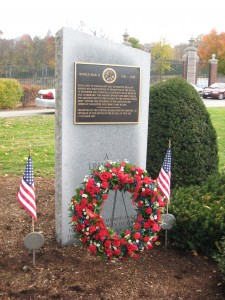
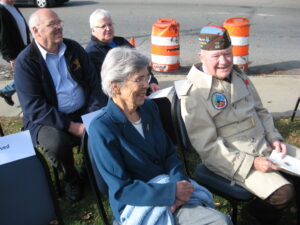
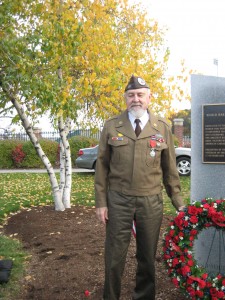
Photos by Jeanne de Marcken, Associate

American Legion Magazine Remembers VBOB
The Battle Remembered, Henry Howard
http://www.legion.org/magazine/225538/battle-remembered
Battle of the Bulge Remembered: Kate Nolan, 57th Field Hospital
http://www.legion.org/legiontv?pid=latest&v=ilQ7VlNq6cA
Battle of the Bulge Remembered: Irving Locker, 116th AAA Gun Bn
http://www.legion.org/legiontv?pid=latest&v=vHP6AiAZUY0
Battle of the Bulge Remembered: Mike Levin, 7th Armored Division
http://www.legion.org/legiontv?pid=latest&v=sIrC4r9XGUk
Media by Henry Howard
Deputy Director of Magazine Operations
2nd ID Association at Krinkelt, Belgium
70th Anniversary of the Battle of the Bulge
http://2ida.org/2014/12/15/70th-anniversary-of-the-battle-of-the-bulge/

Wreaths Across America at VBOB Memorial
The Veterans of the Battle of the Bulge Memorial at Arlington Cemetery was rewarded by a wreath laying ceremony on Sunday, January 25, 2015 by “Wreaths Across America.” VBOB was honored with the presence of Wayne G. Hanson, Chairman of the Board of Directors, and Tobin Slaven, Director of Communications of “Wreath Across America.”


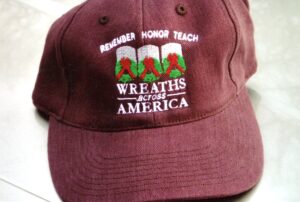

VBOB members present were Col. (Ret) Bert Rice, Madeleine Bryant, and J. David Bailey.
http://www.wreathsacrossamerica.org
Submitted by J. David Bailey, 106th ID

Residents of Houffalize, BE Commemorate January 16, 1945
On January 16, 1945, the 11th Armored Division of General Patton’s Third U.S. Army made the historic juncture with the 2nd Armored and 84th Infantry Divisions of General Hodge’s First U.S. Army at Houffalize, Belgium during the Battle of the Bulge. This action effectively halted the German Army by containing the “Bulge” that the Germans had created in the Allied lines in the Ardennes Forest on December 16, 1944.
To commemorate the 70th Anniversary of this event, the people of Houffalize held a two-day celebration during the weekend of January 17-18, 2015. The Saturday events included a commemorative walk through the environs of Houffalize, a “Freedom Bivouac” (where local restaurants served period food in an outdoor American G.I. setting), a tour of the “Bulge” monuments in the town, and a dance with a Glen Miller-themed band. The Sunday events included a Mass at the town’s sports center for all American G.I.s who died in the “Bulge”, a procession to the Houffalize “Juncture Monument”, the playing of the American national anthem by a local marching band, the laying of flowers at the monument, a lecture on the link-up at Houffalize, a special “Liberty Cocktail” for all present, an American-style barbecue, and a parade of military vehicles with drivers in period uniforms.
The commemorative Mass was celebrated on the hood of a jeep, as Mass often was during World War II, by the Reverend Jean-François Thiebaut, Dean of Ourthe and Salm and the Reverend Jean Lambin, Dean of Houffalize. During his homily, Dean Thiebaut made special mention of the 11th Armored Division’s role in the link-up at Houffalize, and showed the congregation a roll of honor of “Patton’s Thunderbolts” who died in the “Bulge”. It was placed on the altar for the remainder of the Mass. Several flag bearers represented the three American divisions, which made the juncture at Houffalize (as well as Belgian soldiers who fought in the “Bulge”) during the Presentation of the Gifts at the Mass. And three career officers from the Belgian Armed Forces sang the hymns during the Mass, as well as the American, Belgian and European anthems at the conclusion of the liturgy.

The accompanying photo shows the “Juncture Monument” in Houffalize (with its plaques to the 11th Armored, 2nd Armored and 84th Infantry Divisions) and the flowers deposited there during the link-up celebration.
The people of Houffalize are proud to recall their town’s role in the history of the “Bulge”. And they are forever grateful for the role the American G.I.s played in their liberation 70 years ago.
Submitted by
Pat Kearney, 11th AD, 55th AIB
Commemorate the First Us Army Mass Parachute Drop
You are invited to participate in a World War II ceremony presented by the living history group MTI-Military Timeline Impressions.
Where: The 82d Airborne Division Monument located on Highway US1 between Elgin and Camden, SC (adjacent to US1 on the Invista Company Property)
When: March 29, 2015
Time: 2:00pm
Purpose: Commemorate those who participated in the “Jump”, which occurred on March 29, 1943 and all WWII Veterans and Veterans of all Wars/Conflicts
Groups planning to participate include but are not limited to American Legion, SC Historic Aviation Foundation (SCHAF), Veterans of Foreign Wars, Marine Corps League, WWII C-47 Club, and others. We are planning a “flyover” of WWII Vintage and late model aircraft.
It would be great to see you there!
Questions call 803-356-0611

VBOB in Washington DC, January 27, 2015
Veterans, family members and friends gathered to commemorate the 70th anniversary of the end of the Battle of the Bulge by laying wreaths in Arlington Cemetery at the Tomb of the Unknowns and and the VBOB Memorial. A wreath was also laid at the World War II Memorial.
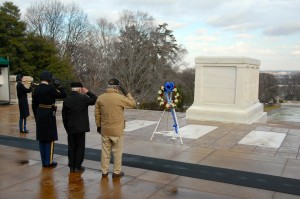
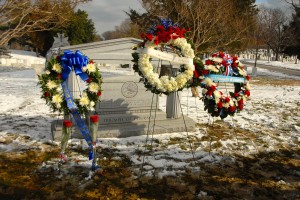
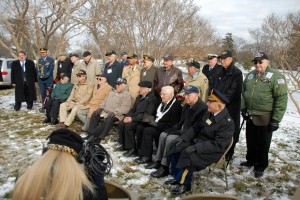
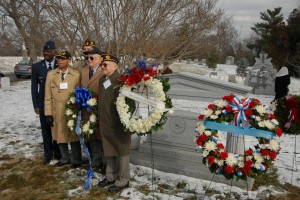
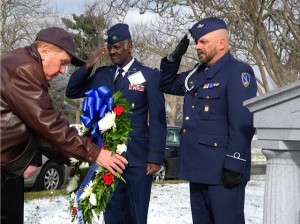
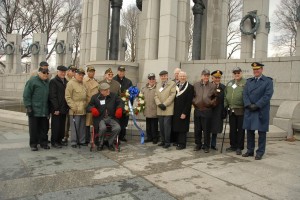
Johan Verbeke Belgium’s ambassador to the United States hosted the group at his residence for dinner.
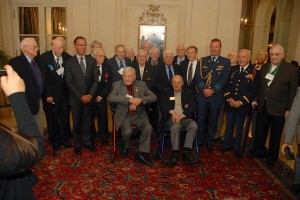
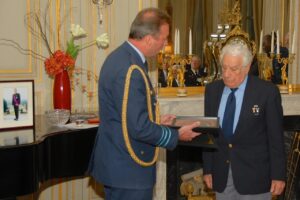
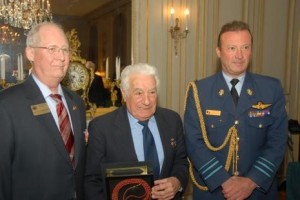
photos by Thomas C. Roberts, Jr., Associate

VBOB Reunion, Williamsburg, VA, 8/14-18/2015
Details forthcoming


